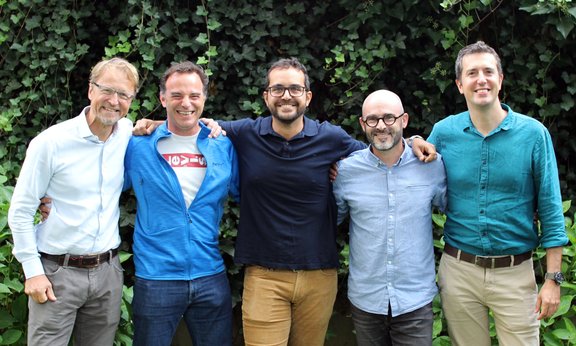Levitation of both large objects and of single atoms has become a widely used technique in science and engineering. In the last years, many researchers have started to explore a new horizon: the levitation of nano- and micro-particles – still smaller than the diameter of a single hair, but composed of billions of atoms – in vacuum. The ability to manipulate and measure the translation and the rotation of these objects with high precision has generated a new experimental platform with unique opportunities for fundamental and applied research. “To name just a few examples: the high sensitivities of levitated objects to external forces and accelerations are fueling both sensor development and searches for new physics, and the full control of friction and forces affecting the motion of these particles the testing of stochastic thermodynamic hypotheses. Moreover, friction and noise can be reduced to a fundamental minimum by creating ultrahigh vacuum, paving the way not only for quantum sensing and detection, but also for exploring macroscopic quantum superpositions in a hitherto unexplored regime of large masses”, says Oriol Romero-Isart from the Institute of Quantum Optics and Quantum Information of the Austrian Academy of Sciences and the Department of Theoretical Physics at the University of Innsbruck.
Cooled into the quantum ground state
In 2010, quantum optics techniques were first proposed as a way to cool the motion of a levitated nanoparticle to the quantum regime using an optical cavity. Since then, these proposals have been developed experimentally and complemented by the realization of control mechanisms based on optical, electrical, and magnetic forces. By now, both optical cavity-based and active feedback cooling schemes have succeeded in cooling the motion of a dielectric levitated nanoparticle into the quantum ground state, opening the way toward unexplored quantum physics.
Physics, material science and sensors
The levitation of nano-objects in high vacuum offers new opportunities for research and applications by providing previously unattainable isolation from the environment. “The current toolbox allows to levitate and control any kind of nanoobject, including magnets, metals, diamonds containing color centers, graphene, liquid droplets, and even superfluid helium, by means of optical, electrical, and magnetic interactions”, explains Carlos Gonzalez-Ballestero, Postdoctoral researcher at Department of Theoretical Physics at the University of Innsbruck. “These interactions also provide a means to couple the internal degrees of freedom (e.g. phonons, magnons, excitons) to the well-controlled external degrees of freedom (translation, rotation).” Levitated systems are clean testbeds for material science, where matter in extreme conditions can be probed and even engineered. Furthermore, levitated systems are an ideal platform to study non-equilibrium physics. Extending control to all the degrees of freedom of a levitated particle allows to reduce sources of noise and decoherence. It will open the door to a new regime of macroscopic quantum physics (e.g. the preparation of macroscopic quantum superpositions of objects composed by billions of atoms) and the probing of weak forces (e.g. those predicted by dark matter models) in yet unexplored regimes. Finally, the use of levitated systems for ultrasensitive detection of forces brings opportunities also for commercial sensing applications, including gravimeters, pressure sensors, inertial force sensors, and electric/magnetic field sensors.

